Golfer’s elbow or Medial Epicondylitis
What’s golfers elbow?
Golfer’s elbow is a condition that causes pain where the tendons of your forearm muscles attach to the bony bump on the inside of your elbow. The pain might spread into your forearm and wrist.
Golfer’s elbow is similar to tennis elbow, which occurs on the outside of the elbow. It’s not limited to golfers. Tennis players and others who repeatedly use their wrists or clench their fingers also can develop golfer’s elbow.
The pain of golfer’s elbow doesn’t have to keep you off the course or away from your favorite activities. Rest and appropriate treatment can get you back into the swing of things.
Medial epicondylitis is a type of tendinitis, a condition marked by inflammation or irritation of a tendon. In the case of medial epicondylitis, overuse or injury causes small tears in the tendon that connects the elbow to the wrist. These tears cause swelling of the tendon and pain.
A person with medial epicondylitis typically experiences pain when they bend the wrist toward the forearm.
Often referred to as golfer’s elbow, this condition may affect anyone who performs an activity that puts a continual strain on the wrist and forearm.
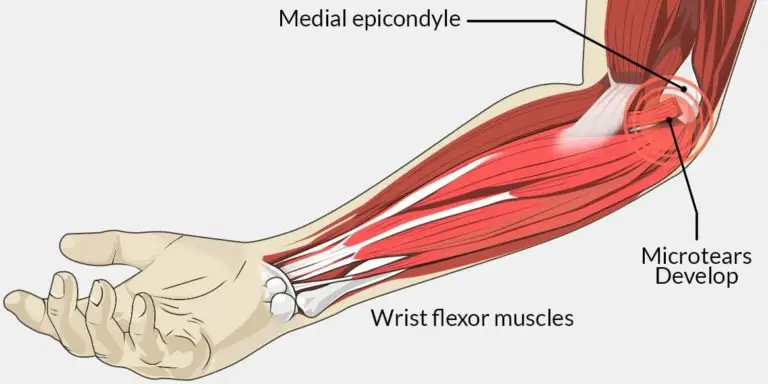
Symptoms
Symptoms of medial epicondylitis may develop slowly, particularly when the condition has been brought on by overuse. Other people may develop symptoms suddenly, especially in the event of injury.
Golfer’s elbow is characterized by:
Symptoms associated with medial epicondylitis may be mild or severe. Some include:
- Elbow pain when flexing the wrist toward the forearm
- pain that extends from the inside of the elbow through the wrist to the pinky
- a weak grip
- pain when shaking hands
- difficulty moving the elbow
- Pain and tenderness. Usually felt on the inner side of your elbow, the pain sometimes extends along the inner side of your forearm. Pain typically worsens with certain movements.
- Stiffness. Your elbow may feel stiff, and making a fist might hurt.
- Weakness. You may have weakness in your hands and wrists.
- Numbness or tingling. These sensations might radiate into one or more fingers — usually the ring and little fingers.
- The pain might worsen with certain movements, such as swinging a golf club.
Causes of Golfer’s elbow
common cause: overuse of the tendon
Golfer’s elbow, also known as medial epicondylitis, is caused by damage to the muscles and tendons that control your wrist and fingers. The damage is typically related to excess or repeated stress — especially forceful wrist and finger motions. Improper lifting, throwing, or hitting, as well as too little warmup or poor conditioning, also can contribute to a golfer’s elbow.
Besides golf, many activities and occupations can lead to golfer’s elbow, including:
- Racket sports. Improper technique with tennis strokes, especially the backhand, can cause injury to the tendon. Excessive use of topspin and using a racket that’s too small or heavy also can lead to injury.
- Throwing sports. Improper pitching technique in baseball or softball can be another culprit. Football, archery, and javelin throwing also can cause golfer’s elbow.
- Weight training. Lifting weights using improper techniques, such as curling the wrists during a biceps exercise, can overload the elbow muscles and tendons.
- Forceful, repetitive occupational movements. These occur in fields such as construction, plumbing, and carpentry
- squash
- Rowing
- To cause a golfer’s elbow, the activity generally needs to be done for more than an hour a day on many days.
Risk factors
You could be at higher risk of developing a golfer’s elbow if you’re:
- Age 40 or older
- Performing repetitive activity at least two hours a day
- Obese
- A smoker
- Others may be at risk because of activities performed at work. Any activity that involves continual twisting or bending of the wrist may put a strain on the tendon.
People in high-risk occupations include:
- butchers
- plumbers
- construction workers
- regular computer users
- assembly line workers
- cooks
- painters
When to see a doctor
Consult your doctor if rest, ice, and over-the-counter pain relievers don’t ease your elbow pain and tenderness. Seek immediate care if:
- Your elbow is hot and inflamed, and you have a fever
- You can’t bend your elbow
- Your elbow looks deformed
- You suspect you’ve broken a bone
Diagnosis
A golfer’s elbow is usually diagnosed based on your medical history and a physical exam. To evaluate pain and stiffness, the doctor might apply pressure to the affected area or ask you to move your elbow, wrist, and fingers in various ways.
An X-ray can help the doctor rule out other causes of elbow pain, such as a fracture or arthritis. Rarely, more comprehensive imaging studies — such as MRI — are performed.
Golfer’s elbow test:
The patient should be seated or standing and should have his/her fingers flexed in a fist position. The examiner palpates the medial epicondyle with one hand and grasps the patient’s wrist with his/her other hand. The examiner then passively supinates the forearm and extends the elbow and wrist. A positive test would be a complaint of pain or discomfort along the medial aspect of the elbow in the region of the medial epicondyle.
Complications
Complications from medial epicondylitis are uncommon. If a person stops performing the activity that has caused the condition or performs it less often, they will usually recover.
Only those who continue with the problematic activity, in spite of the pain, tend to experience further issues. In these instances, a person may require surgery to correct the condition.
Treatment of Golfer’s elbow
Treatment begins with avoiding activity that causes pain. To help relieve pain, use ice.
Medication
You can take an over-the-counter pain reliever. Try ibuprofen (Advil, Motrin IB, others), naproxen sodium (Aleve), or acetaminophen (Tylenol, others).
Corticosteroid injections are not commonly given because they haven’t been shown to be effective long-term.
Golfer Elbow Physical Therapy
Physiotherapy aims:
- Reduction of elbow pain.
- Facilitation of tissue repair.
- Restoration of a normal joint range of motion and function.
- Restoration of normal muscle length, strength, and movement patterns.
- Normalization of your upper limb neurodynamics.
- Normalisation of cervical joint function.
Physiotherapy treatment Plan :
- Rest. Put your golf game or other repetitive activities on hold until the pain is gone. If you return to activity too soon, you can worsen your condition.
- Ice the affected area. Apply ice packs to your elbow for 15 to 20 minutes at a time, three to four times a day for several days. To protect your skin, wrap the ice packs in a thin towel. It might help to massage your inner elbow with ice for five minutes at a time, two to three times a day.
- Use a brace. You can wear a counterforce brace on your affected arm, which might reduce tendon and muscle strain. In some instances, a Golfer’s Elbow Brace (which is a tennis elbow brace worn on the opposite side of the elbow) may be beneficial.
- Stretch and strengthen the affected area. Your doctor might suggest exercises for stretching and strengthening. Progressive loading of the tendon with specific strength training exercises has been shown to be especially effective. Other physical or occupational therapy practices can be helpful too.
Golfers elbow exercises
The exercises will increase blood flow, relieve pain, and reduce inflammation in your elbow and forearm muscles. They’ll also help stretch and strengthen these tendons.
To build strength, prevent and relieve pain, and increase flexibility, do the following exercises two times per day.
Build up gently and gradually over time. Do these exercises before and after any activity that causes stress or strain. Be gentle and don’t force any of the movements. You may experience sensations, aches, and slight discomfort while doing these exercises, but it shouldn’t go beyond that.
Isometric wrist strengthening (extension)
Keep your body still throughout this exercise.
While seated, place your affected forearm on a table or the arm of a chair with your palm facing down.
Place your opposite hand on the back of your affected hand.
Press your affected hand up, using your opposite hand to create resistance by pressing down.
Continue for 10 seconds, slowly increasing the resistance.
Gently release. Do 15 reps.
Isometric wrist strengthening (flexion)
Keep your body still while doing this exercise.
While seated, rest your affected forearm on a table or the arm of a chair with your palm facing up.
Press your opposite palm into your affected hand.
Press your affected hand upwards as you use your opposite hand to create resistance by pressing down.
Continue for 10 seconds, slowly increasing the resistance.
Gently release. Do 15 reps.
Resisted wrist extension
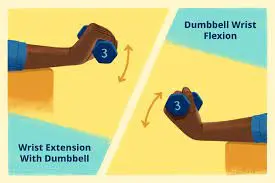
While seated, hold a weight with your affected arm.
Place your forearm on a table or the arm of a chair with your hand hanging over the edge and your palm facing down.
Slowly lower your hand down before raising it back to its original position.
Do 1–3 sets of 15 reps.
Resisted wrist flexion
While seated, hold a weight with your affected arm.
Place your forearm on a table or the arm of a chair with your hand hanging over the edge and your palm facing up.
Slowly lower your hand down before raising it back to its original position.
Do 1–3 sets of 15 reps.
Golfer’s elbow stretch
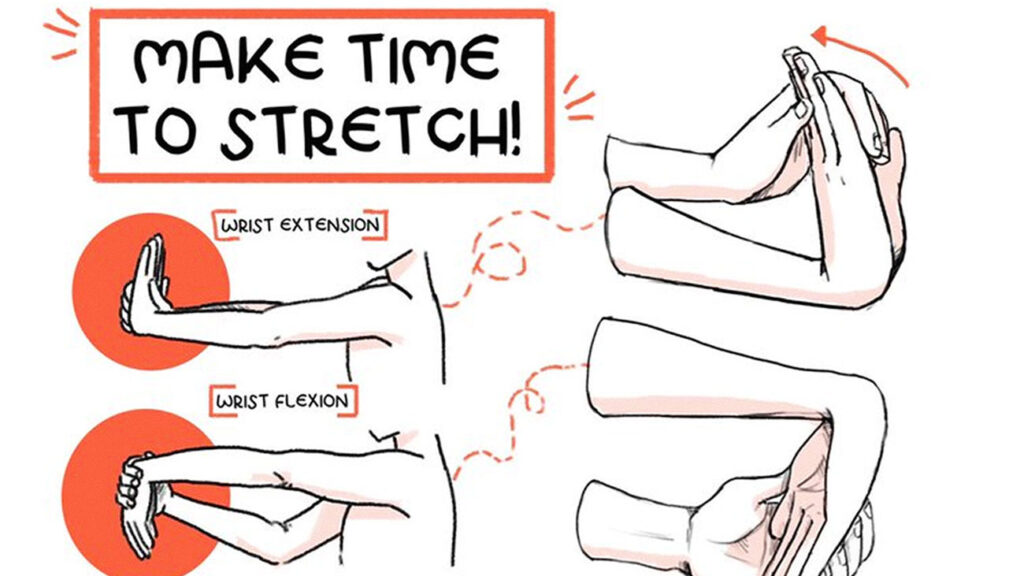
You will feel this stretch in the underside of your forearm.
Extend your affected arm in front of you with your fingers and palm facing up.
Use your opposite hand to gently pull your fingers and wrist down toward your body.
Hold this stretch for 30 seconds.
Do 2–5 reps.
Ball squeezes

Squeezes are a simple exercise involving a soft rubber ball or stress reliever. Place the ball in the palm of the affected hand and make a fist around it. Squeezing and releasing in repetition will strengthen the forearm.
Finger extensions
Squeeze all five fingertips together and stretch a rubber band around them. Extend the fingers away from each other as far as the rubber band will allow.
Forearm pronation and supination
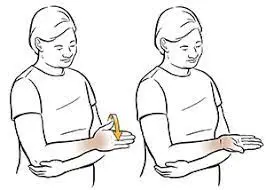
This exercise involves holding a heavy object, such as a dumbbell.
Lay the damaged forearm on a table or knee for stability. To start, hold the object so that the palm is parallel to the body. Rotate the hand so that the palm faces downward. Return to the starting position, then rotate the hand so that the palm faces the ceiling.
Preventing golfer’s elbow
To prevent golfer’s elbow, there are a number of things you can try, including:
- Work on strengthening your forearm muscles with light weightlifting or by squeezing a tennis ball for
- five minutes at a time. Even simple exercises can help your muscles absorb the energy of sudden physical stress.
- Stretch before your activity. Walk or jog for a few minutes to warm up your muscles. Then do gentle
- stretches before you begin your game.
- Changing your technique and slowing down your golf swing to allow your arm to absorb less shock
- Using proper form to avoid overloading your muscles
- Use the right equipment. If you’re using older golfing irons, consider upgrading to lighter graphite clubs. If
- you play tennis, make sure your racket fits you. A racket with a small grip or a heavy head may increase the
- risk of elbow problems.
- Lift properly. When lifting anything — including free weights — keep your wrist rigid and stable to reduce
- the force on your elbow.
- Stay hydrated by drinking plenty of water before, during, and after your golf game.
- Know when to rest. Try not to overuse your elbow. At the first sign of elbow pain, take a break.
- Gradually return to your usual activities. When your pain is gone, practice the arm motions of your sport or activity. Review your golf or tennis swing with an instructor to ensure that your technique is correct, and make adjustments if needed.
- One of the best prevention methods is to warm up before you golf. This gets your blood flowing and raises
- your muscle temperature, preparing your body for more intense activity. Stretch your shoulders, arm, and
- back before each session.
Golfer’s elbow brace:
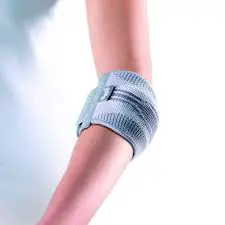
If you’re already experiencing pain, you could try wearing a counterforce brace or splint. These devices help distribute the tension throughout the tendon and muscle instead of directly over the injury site. You can also try using a compression bandage.
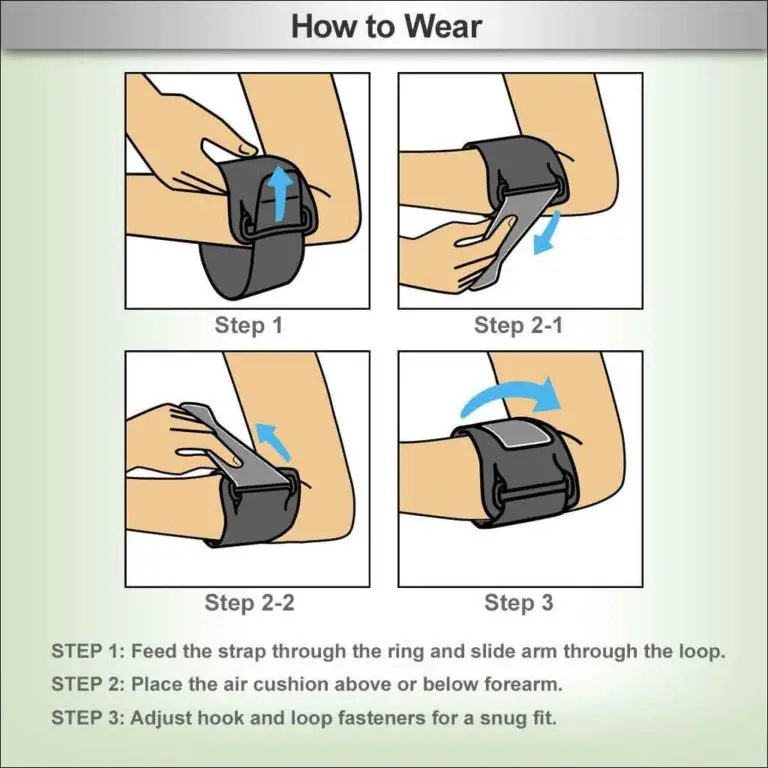
These simple home remedies can ease symptoms during a flare-up and prevent them from recurring.
Rest:
Rest for a few days when your symptoms are severe. Take a break from any movements that cause pain. If you must do them for a job, modify or adjust the movements as much as you’re able. To prevent swelling, elevate your elbow above your heart.
Heat and ice treatment
Use a heating pad or ice pack on the affected area. Wrap it in a towel to avoid making direct contact with your skin. Do this for 10 to 15 minutes at a time every few hours.
Pain relief
Take acetaminophen or non-steroidal anti-inflammatory drugs (NSAIDs) to relieve pain. Take them before the pain becomes intense or severe. Always stay within the recommended dosage and don’t take pain relievers for more than 10 days.
Natural options for pain relief include turmeric, willow bark, and cloves.
Surgery for Golfer Elbow
Surgery for golfer’s elbow involves repairing or replacing damaged tissue with tendon grafts.
Medial epicondyle release surgery is commonly used for the treatment of a golfer’s elbow. This condition can be very painful around the elbow. The goal of this surgery is to remove the damaged tendon that’s creating elbow pain. The doctor then reattaches a healthy tendon in its place.
There are several methods for medial epicondyle release surgery. These methods are open and arthroscopic surgeries, which your surgeon does through small cuts in your skin. Most surgeons do this operation on an outpatient basis. You can start recovering gradually at home the same day that you have the procedure.
Your surgeon makes a small incision on the side of your elbow. They move the soft tissues to get a proper view of the tendon. The surgeon cuts this tendon to remove the damaged and inflamed portion. The surgeon also removes any scar tissue or other debris that can cause inflammation and pain. They replace the healthy tendon back into place using stitches.
Ergonomics
If you have pain due to how you sit at your desk or from lifting or carrying heavy objects or bags, change your positioning and posture to allow for proper movement.
Takeaway
- The simple and effective exercises above can help you manage the symptoms of a golfer’s elbow as soon as they arise. You can do these a few times per day.
- In addition, follow a healthy diet, get plenty of rest, and exercise a few times per week. Your symptoms should subside within two weeks of treatment. If you don’t see improvement after this time, see your doctor.
FAQ
How do you fix a golfer’s elbow?
To fix a golfer’s elbow:
Changes in Painful Activity.
Injections of corticosteroids.
Physical therapy
Extracorporeal shock wave therapy delivers energy waves to injured soft tissues in the elbow under the guidance of ultrasonography.
Ice/Hot Pack
painkillers or anti-inflammatory drugs.
What is the main cause of golf elbow?
Usually, the illness is caused by frequent, intense arm movements. The most typical location for a golfer’s elbow in a rookie right-handed golfer is the right elbow. People who get the illness frequently shift their weight incorrectly and have a propensity to “throw the club down” when hitting the ball.
What muscles are affected by a golfer’s elbow?
The main location of the golfer’s elbow pain is the medial epicondyle, a bony bump on the inside of the elbow where the tendons of the forearm muscles attach. On the other hand, tennis elbow typically manifests as pain in the lateral epicondyle, a bony bump on the outside of the elbow.
How do you diagnose a golfer’s elbow?
A physical examination is usually sufficient to make the diagnosis of medial epicondylitis. The patient may be asked to lift their hand by bending their wrist against resistance when the doctor places their arm on a table, palm up. The inner aspect of the elbow is typically where discomfort is reported in those with medial epicondylitis.
What is the fastest way to cure a golfer’s elbow?
An essential component of the golfer’s elbow therapy is rest. It’s also been shown that icing the injured area helps. Pain will be lessened by this, but it might not be sufficient. If the pain is intolerable, you might consider taking some medicine to lessen the discomfort and inflammation.
Should I massage my golfer’s elbow?
Transverse friction massage is a frequently used massage method for the treatment of tennis elbow and golfer’s elbow. With the tips of one or two fingers, it is administered to the muscles and tendons.
Can the golfer’s elbow fully heal?
If you stop or minimize activities that exacerbate your golfer’s elbow, the problem may gradually improve without treatment.
Is golfer elbow curable?
You can learn these and other strengthening and flexibility exercises from a physical therapist. Most of the time, physical therapy and self-care are enough to cure a golfer’s elbow, and more care is not required.

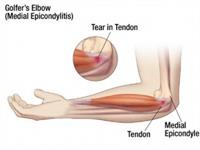
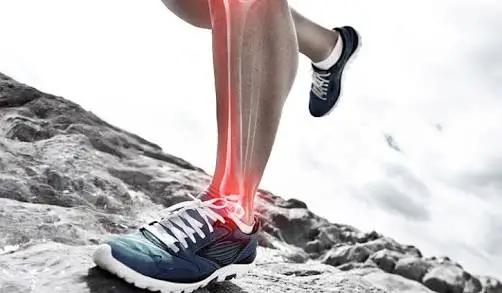
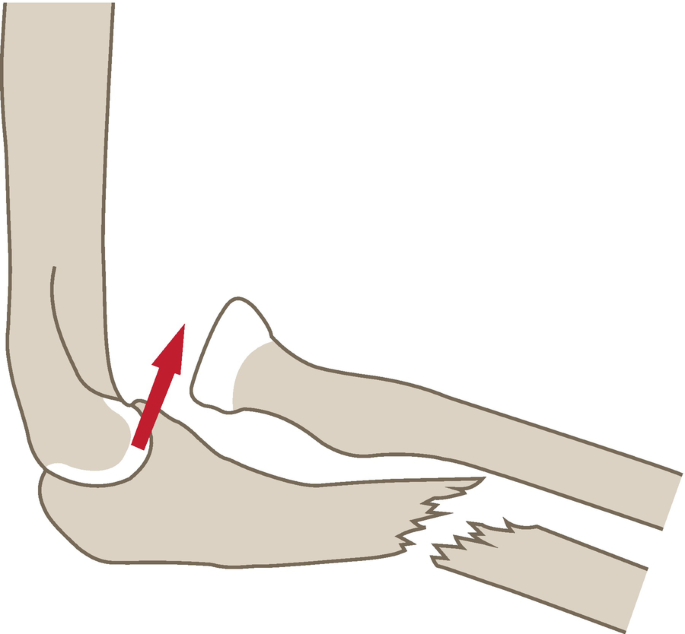

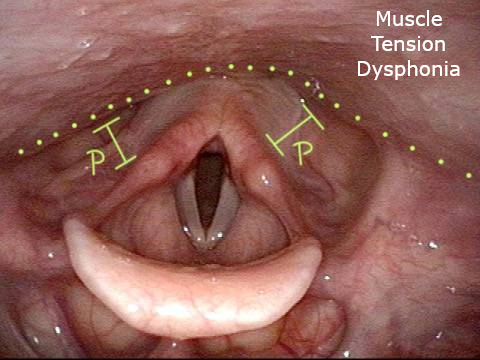
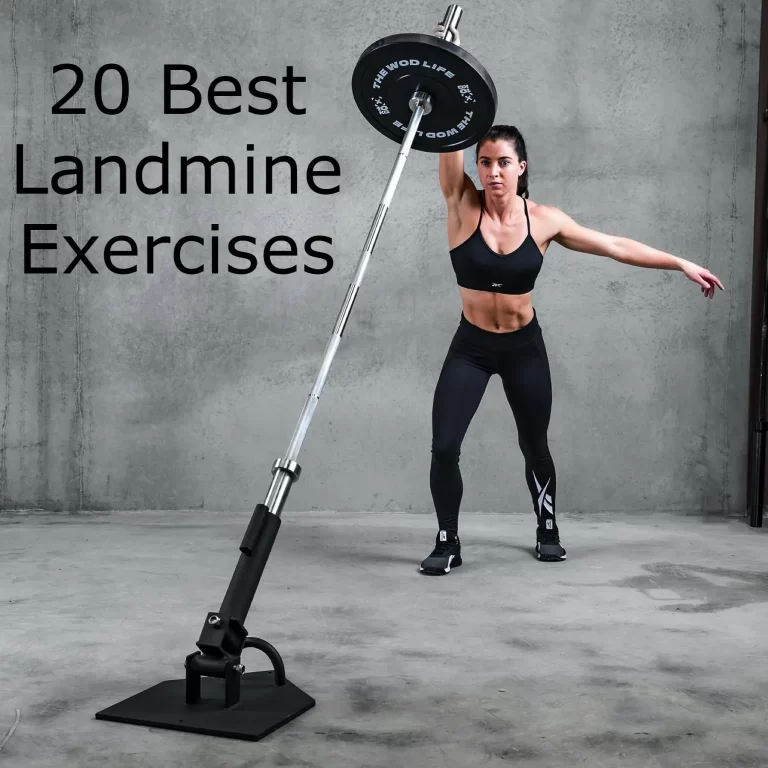
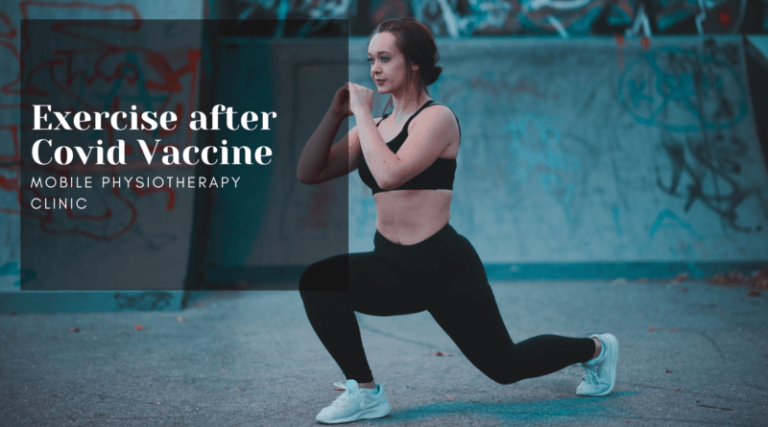
11 Comments